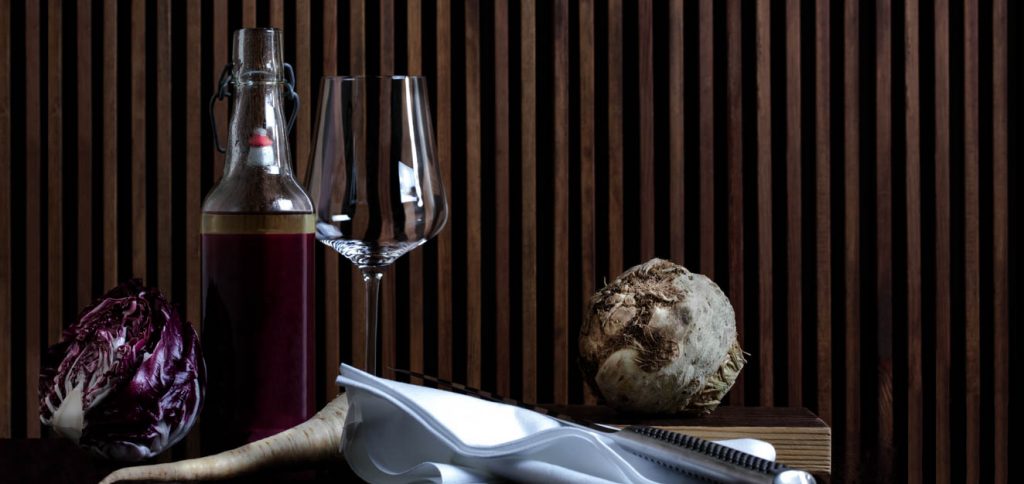Curiosity creates new markets and products

The consumer preference for natural, regional and healthy products has long been recognized by the non-alcoholic beverage industry. At the same time, food engineers are showing a special interest in new taste experiences – especially those that come with a real surprise.
When it comes to new trends, it’s often worthwhile to think outside the box. The food and gastronomy sector, for instance, has long experimented with the unconventional: In 1992, French food engineer Francois Benzi and award-winning British chef Heston Blumenthal discovered that white chocolate and caviar are an excellent pairing. The combination also won over the guests of the “The Fat Duck” restaurant near London. After further research, the two creative minds came to the conclusion that products always went together particularly well if they contain the same main flavor components.
Unconventional, yet tasteful product combinations
Belgian food engineer Bernard Lahousse discovered how to combine products with the same main flavor components back in 2007. Together with former award-winning chef Peter Coucquyt and product developer Johan Langenbick, he began analyzing the flavors of individual foods. The team produced flavor maps for a number of products. These could then be automatically matched with flavors already available in the database. More than 1,000 products and their flavor profiles are now stored there, allowing for what are known as foodpairing trees, which make it possible to identify which products go well together. “It’s a visual aid. Cooks and barkeepers, for instance, can thus see at a glance which ingredients go best together from a flavor viewpoint,” says Langenbick about the system. The concept of food pairing has inspired cooks and barkeepers from the outset. They use the website foodpairing.be as a source when developing recipes. “Palates have evolved. That also presents great opportunities for chefs and brands. We believe that foodpairing can contribute to improving the quality of life.” It’s also certainly a path that the alcohol-free beverage industry will learn from as it gathers new ideas for innovative methods.
Artificial intelligence: Watson knows best
Where there’s artificial intelligence, there’s a way. A good example is Watson, an intelligent computer from IBM, which allegedly knows more recipes than any chef and can tell which components are crucial for a dish’s good taste. It uses this knowledge to combine foods that have perhaps never before been put together. The new compositions aim to create dishes that reach star-level cuisine. We can’t wait to see who from the beverage industry will let Watson create its first drink and what the outcome will be.
Haute cuisine: Paired with both traditional wine and alcohol-free beverages
A look at haute cuisine opens up new perspectives: At the two-star Berlin restaurant Horváth, chef Sebastian Frank offers guests both wine and non-alcoholic beverages to go with his menus. Non-alcoholic beverages include such things as whey with horseradish, honey and camelina oil, anise hyssop syrup with chardonnay vinegar and sage, juice from root vegetables, celery and apple with roasting oil, or cabbage, cucumber and mint smoothies. “The beauty of it is that beverages can pick up and intensify the flavor nuances of a dish. On the other hand, beverages can add flavors to the dishes that that were still lacking,” says Frank
The future of the restaurant
In London, the Redemption is the first “sober bar” in the British capital. It’s allegedly fully booked every evening. Here too, there are no limits when it comes to the creativity of non-alcoholic drinks. For instance, the beverage menu offers the lettuce spray, a drink consisting of iceberg lettuce, lime, cucumber, wasabi and aloe vera. And for several years, René Redzepi, whose Danish restaurant Noma is one of the best in the world, has served rose kombucha, oil from black currant wood, and even ant juice with his dishes. His answer to how he views the restaurant of the future: “You get the best flavors and, at the same time, are doing something for your health. Kind of like going to physical therapy. Not like it used to be when people stuffed themselves with fatty foods and had fun doing so, but felt bad afterwards. Fermentation is the key element. It’s not New Age, there are dozens of very serious studies supporting this.”
It doesn’t always have to be award-winning cuisine
According to market research institute Mintel, new product launches with fruit and vegetables in the juice beverage category increased fivefold in Europe over the past five years. Along with carrots, other types of vegetables such as beet, cucumber and pumpkin have grown increasingly popular for juices. In addition to vitamins, minerals, flavors and color benefits, the use of vegetables in juices is also a good way to reduce sugar and calories. Juice combinations with wild fruit have also found broad appeal and serve consumer demand for more natural ingredients. This trend shows that consumers are curious and enjoy trying new things. Even outside of award-winning restaurants.
Curiosity and delight in trying new things are also keywords at drinktec. Visitors can find a great deal of innovative ingredients and beverage concepts at the Special Area New Beverage Concepts in hall B1 at drinktec. A targeted exchange among experts on top issues of the future, including new beverage formulations, is planned in the Innovation Flow Lounge. Packaging and marketing concepts are also featured. At the “5 O’Clock Theme” in the drinktec Forum, visitors to drinktec can also experience visionary presentations during the first three days of the exhibition. These may provide that just the right spark to ignite something new.
The Innovation Flow Lounge is supported by:
The 5 O’Clock Theme is supported by:
